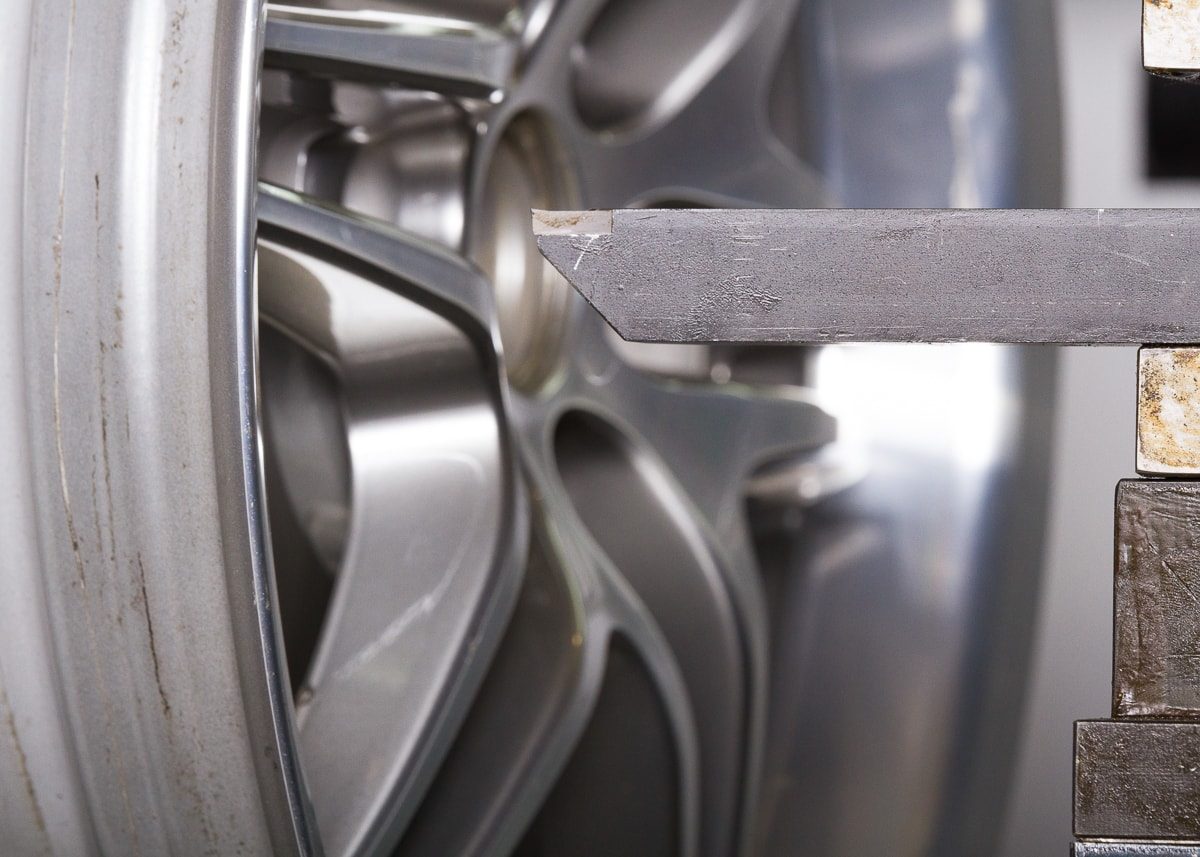When it comes to repairing and refurbishing alloy rims and wheels, diamond cutting lathes are experiencing a rise in popularity. Furthermore, diamond-cut finish alloys are becoming more popular as pre-fitted or purchased rim solutions. This is because diamond-cut alloys offer several benefits to vehicle owners, from personalization to performance. In this article, we will take a look at how diamond cutting lathes work and showcase the benefits of diamond-cut alloy rims to give you a clearer idea of the process and what you can expect from these unique rims and wheels.
How Do Diamond Cutting Lathes Work?
Lathes are a common workshop tool you will find in wood-turning, metalworking, metal-spinning, thermal-spraying, and glass-working factories. Lathes are responsible for rotating a workpiece on an axis around a stationary tool to cut, sand, drill, face, etc. the workpiece symmetrically.
When it comes to diamond cutting lathes, this refers to the process of using lathes to strip a thin layer off the surface of an alloy rim to give it a smoother and shinier look. The precise and fine process is difficult as it requires meticulous attention to detail while using the lathe to trim just the right amount of aluminum off the alloy rims and wheels. Removing too much could result in damages or limit the lifespan of an alloy rim, making diamond cutting specialists sought-after for their scrupulous expertise.
The Benefits of Diamond-Cut Rims and Wheels
Alloy rims have surpassed steel rims as the go-to rim and wheel solutions because they offer better personalization and performance than their traditional counterparts. This is also true of diamond-cut alloys, with these options offering several additional benefits to vehicle owners. Below, we explore the benefits of choosing alloy rims, specifically diamond-cut rims and wheels, or repairing your damaged rims with a reputable wheel repair specialist that has experience in using diamond cutting lathes for refurbishing purposes.
Lighter than Steel
Diamond-cut alloy rims, like their uncut counterparts, are much lighter than traditional steel wheels. This is because the modern aluminum used to produce alloys does not weigh as much as the common steel rim. The weight reduction has several performance-boosting advantages such as improved car responsiveness, better acceleration, and more effective fuel economy.
Better Brake Clearance
More space, or clearance, between the diamond-cut alloys and brake mechanisms is allowed through the installation of quality cut alloys, making braking more precise and much smoother. This is another superior advantage of sourcing high-end diamond cutting lathe services from trusted wheel repair specialists.
Smoother Acceleration
The key performance-boosting advantage of diamond-cut alloy rims is their ability to improve acceleration as well as support smoother acceleration. Due to their lightweight footprint, diamond-cut alloys are more efficiently rotated by the car’s engine, helping it increase speed exceptionally compared to steel rims and wheels.
Rim and Wheel Longevity
Aluminum is stronger than steel, making diamond-cut alloys a long-term solution. Furthermore, alloys dissipate heat more efficiently, minimizing the impact of cracks and bends forming over time. This increase in heat performance may also support brake and tire reactions.
Custom Personalization
One of the main reasons individuals go for alloys is their ability to elevate a car’s look, with diamond-cut alloys offering even more attractive personalization options. There is a wide range of designs and patterns created through the cutting process as well as a variety of colors and finishes to give your car a distinct look.
How to Tell if Your Rims and Wheels are Diamond-Cut?
Whether you are purchasing a new car or repairing your rims and wheels through diamond cutting lathes, there are ways to determine if the rims are diamond-cut alloys. If you were to look very closely at the rims and wheels, you will perceive fine lines created during the cutting process. From far, these lines are inconceivable and the rims appear extremely smooth and shiny, however, the appearance of these small details indicates that the car’s wheels have undergone diamond cutting. Bear in mind that not all wheels can be diamond-cut as the process requires rims and wheels of a certain profile. In saying so, it is best to contact a wheel repair specialist if you wish to know if your current rims can be cut.
With more knowledge on the benefits of diamond-cut alloy rims and wheels as well as a better understanding of how diamond cutting lathes work, you can make smarter rim purchases when you are looking for a new vehicle or set of wheels, or would like to send in your alloys for repair.

